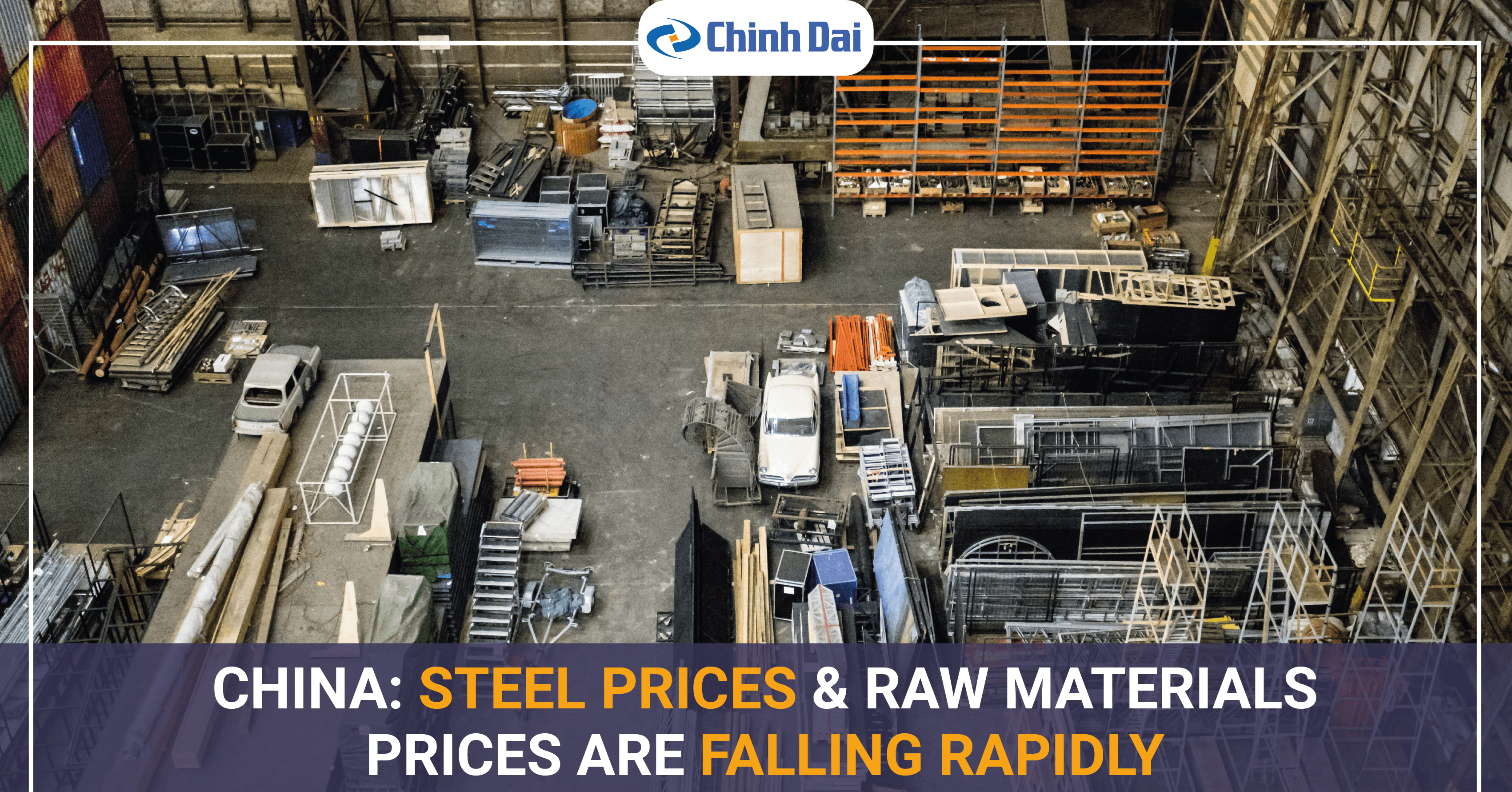
China steel prices and steel material prices recently reversed to decline, after China loosened the policy of importing scrap steel. In the coming time, the world steel and steel material market will be affected by a number of conflicting factors. Accordingly, production costs are forecasted to increase, but China’s steel material demand may not increase as much as last time.
Scrap prices are going down
The price of imported scrap steel (CFR China) on March 10 was at $ 495-500 / ton, down 20 USD / ton from 515 – 520 USD / ton a week earlier, due to the increase in domestic supply and decline in buying price of some factories.
In other markets, Japan’s HS steel scrap (equivalent to HRS101 imported into China) on March 10 offered 500 – 505 USD / ton (CFR the East ports of China). Scrap exporters in Japan on the same day even offered to sell 180,000 tons of steel scrap to Chinese customers at a price of $ 495-500 / ton (CFR). It causes scrap steel importers to worry about oversupply, especially when buyers only accept to buy 60,000 tons of good quality Shindachi and HS scrap at JPY 48,500 (USD 454) and JPY 47,500 / ton, fob Japan. There are even Japanese firms bidding for H2 scrap prices for Korean customers at only JPY 43,000 / ton, fob. Notably, this asking price is 500 JPY / ton lower than the asking price of some steel companies.
“The sellers (scrap) are looking for ways to make money and make a profit right now,” said an insider from Japan, adding: “It looks like the market is about to hit ‘peak’, or the price is currently the ‘peak’ ‘level.
Iron ore prices are also on a downward trend
The price of iron ore and finished steel in Asia has also been on a downward trend recently, prompting many importers to suspend all import activities to listen for the situation.
On March 11, the price of iron ore in May – the reference for the whole iron ore market – on the Dalian floor (China) was at 1,065 CNY (equivalent to 163.89 USD) / ton while iron ore imported into Chinese seaports was at $ 166 / ton.
As for steel, the price of construction steel bars in Eastern China earlier this week was at 4,640-4,670 CNY / ton, down 80-90 CNY (12,36-13.91 USD) / ton compared to the end of last week.
On the Shanghai floor, steel prices also retreated from a record high. Accordingly, the current steel bar is about 4,710 CNY / ton, hot rolled steel about 4,760 CNY / ton.
What are the causes of the downward trend?
Uncertainty about the prospects of the steel market in particular and industrial raw materials, in general, comes from the meeting of the Congress (China People’s Political Consultative Conference and National People’s Congress). The discussion of the next 5-year plan did not focus on economic growth. Markets are waiting to see a series of economic policies that China will implement after this session, including the possibility of tightening monetary supply to reduce quantitative easing and prevent overheating of the country in the financial and monetary market.
Iron and steel market movements and China’s recent move to lift the ban on scrap imports are the focus of attention for people in this industry, as the Chinese start to import scrap steel could cause prices to change.
Previously, it was reported that starting from January 2021, China removed the ban on scrap steel imports – the capital was issued 2 years earlier; at the same time, reducing import tax on scrap steel serving for steel re-production to 0%. Currently, some companies in this country have started to take advantage of the above policy to import.
Will steel prices increase?
If China increases scrap steel imports but maintains the import of finished steel, the global scrap steel price will increase. Otherwise (China reduces imports of commercial products), the steel industry will generally not change. However, if China imports a lot of scrap and exports billets to Asian factories and companies find that billet imports from China are more efficient than scrap imports, the demand for scrap steel imports from countries (except China) will decrease.
Some experts said that in the past when China developed blast furnaces, the electric arc furnace could not work. It was not until the country pursued the policy of developing green technology, environmentally friendly, and the electric arc furnaces had land to develop. And now, the re-import of scrap steel will not only affect scrap prices on the world market but also benefit blast furnaces in 2021. Thus, with this trend, electric furnaces will be more disadvantageous than blast furnaces.
Source: Metalbulletin, mysteel, cafef
